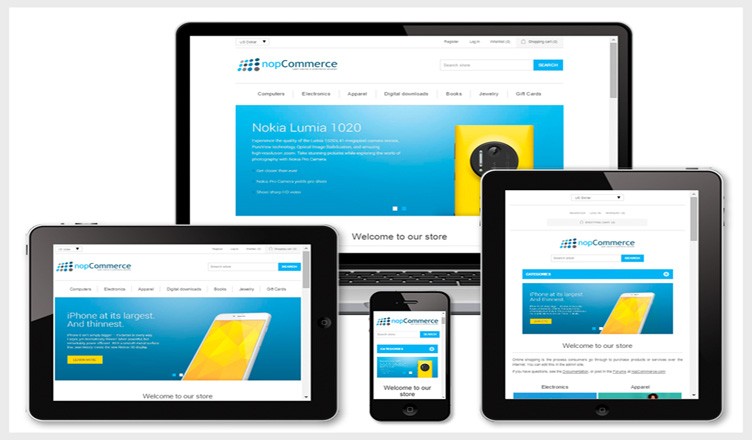In today’s hyper-connected world, businesses spend more on online campaigns than ever. From social media ads to email automation, there’s no shortage of platforms promising results. But how do you know if your efforts are paying off? That’s where measuring Digital Marketing ROI becomes essential.
Whether you’re a seasoned marketer or just getting started, understanding your return on investment helps you make smarter decisions, stretch your budget further, and focus on what works. So let’s break down exactly how to calculate ROI, what metrics to focus on, and how to tell if your marketing is truly driving value.
What Is Digital Marketing ROI?
At its core, Digital Marketing ROI (Return on Investment) measures the profitability of your digital campaigns. It answers the simple question: “Are the results worth the money and time spent?”
In simple terms, ROI tells you how much revenue you’ve earned compared to how much you’ve invested. For example, if you spend $1,000 on a campaign and it generates $4,000 in revenue, your ROI is 300%. Sounds great, right? But things can get tricky when tracking conversions across multiple platforms and customer touchpoints.
Why Measuring ROI Matters
Understanding ROI isn’t just about knowing if you made money. It’s about:
- Making informed decisions: Know where to invest more or pull back.
- Optimizing your budget: Allocate funds to channels that generate real returns.
- Identifying underperforming tactics: Save time and effort by cutting what doesn’t work.
- Justifying marketing spend: Prove the value of digital marketing to stakeholders and executives.
It turns marketing from guesswork into a science. Instead of relying on “likes” or vanity metrics, you’re tracking results that impact your bottom line.
The Basic ROI Formula
Let’s start with the most straightforward formula:
ROI = (Revenue from Marketing – Marketing Cost) / Marketing Cost x 100
So, if your campaign earned $10,000 in sales and cost you $2,500, your ROI is:
(10,000 – 2,500) / 2,500 x 100 = 300%
But here’s the catch—this formula works best when you can tie revenue back to a single campaign, which isn’t always easy in the real world.
Setting the Right Goals First
Before calculating ROI, you must define what “return” means for your specific campaign. Are you:
- Driving direct sales?
- Generating leads?
- Increasing signups or downloads?
- Building long-term brand awareness?
Not every campaign will have the same kind of outcome. For example, a content marketing strategy may take months to show measurable sales impact, but it can still provide high ROI over time.
That’s why setting clear, measurable goals from the beginning is essential.
Tracking Revenue and Conversions Accurately
To measure Digital Marketing ROI accurately, you need to be able to track where your revenue is coming from. Here’s how to do it:
- Set up conversion tracking: Tools like Google Analytics, Facebook Pixel, and CRM software help track user actions and conversions.
- Use UTM parameters: These special links tell you exactly which campaign brought in which leads or sales.
- Connect your platforms: Sync your ad platforms, email software, and CRM so data flows between them.
You can start connecting conversions to revenue and measuring results once you’re tracking conversions correctly.
Understand Customer Lifetime Value (CLV)
Sometimes, the first sale isn’t the whole story. Many businesses generate the most value from repeat customers or upsells over time. That’s why it’s essential to factor in Customer Lifetime Value (CLV) when calculating ROI.
Let’s say it costs $100 to acquire a customer, and they spend $500 with you over the next year. Your initial ROI may look low, but the long-term return is relatively high.
Savvy marketers always look beyond the first purchase.
Include All Your Costs
To avoid overestimating ROI, make sure you’re counting all relevant costs—not just ad spend. These may include:
- Software tools and subscriptions
- Agency or freelancer fees
- Content creation costs (videos, graphics, copywriting)
- Internal labor or salaries
- Campaign management time
Accounting for everything gives you a more accurate picture of your actual returns.
Key Metrics to Watch
You’ll need more than just one number to evaluate performance. Here are some crucial metrics to monitor alongside ROI:
- Cost per Lead (CPL) – How much you’re spending to generate one lead
- Conversion Rate – Percentage of visitors who complete a desired action
- Customer Acquisition Cost (CAC) – Total cost to acquire one new customer
- Revenue Per Click (RPC) – Revenue generated for each click on your ad
- Bounce Rate – How many visitors leave without taking action
These metrics give context to your ROI and help you spot where things might be going wrong (or right).
Attribution Models Matter
One of the biggest challenges in tracking Digital Marketing ROI is attribution—figuring out which touchpoint gets credit for a sale.
Let’s say a user first clicks on a Google ad, later sees your Instagram story, then finally converts through an email. Who gets the credit?
There are different attribution models for this:
- Last-click: Gives 100% credit to the final touch
- First-click: Credits the first interaction
- Linear: Divides credit evenly across all touchpoints.
- Time-decay: Gives more weight to recent actions.
A model matching your sales cycle is essential for accurate ROI tracking.
Tools That Can Help You Track ROI
No one should be calculating ROI with spreadsheets alone. Thankfully, some tools make this process easier:
- Google Analytics 4 (GA4): Tracks user behavior across websites and apps
- HubSpot: Provides full-funnel reporting and ROI dashboar.ds
- Klaviyo or Mailchimp: Tracks revenue directly from email campaigns
- Facebook Ads Manager: Shows return on ad spend (ROAS) for paid social
- Google Data Studio: Lets you build custom dashboards for real-time reporting.
These tools help you see the big picture without digging through messy data.
Real-Life Example: Email Campaign ROI
Let’s say you run a promo campaign via email:
- Spend: $300 for design, copywriting, and automation software
- Revenue: $2,400 in direct sales
- ROI = ($2,400 – $300) / $300 x 100 = 700%
That’s a huge return—and a sign that email marketing works well for your business. But don’t stop there. Look at the open rate, click-through rate, and unsubscribes to learn how to improve the next campaign.
Tips to Improve Your ROI
If you’re not seeing the returns you want, here’s how to shift gears:
- Target better: Refine your audience to avoid wasting spend.
- Test and optimize: A/B test ads, landing pages, and email subject lines.
- Improve user experience: Fast-loading websites and clear CTAs boost conversion rates.
- Repurpose content: Stretch your assets across platforms.
- Automate smartly: Use workflows to nurture leads without extra labor.
Great ROI doesn’t come from one killer campaign—it comes from ongoing tweaks and improvements.
The Long Game: ROI and Brand Value
Not every campaign pays off instantly. Some, like blogging, SEO, or video content, take time but build long-term brand equity. While these may not offer instant returns, they drive awareness, trust, and loyalty, leading to higher ROI.
A solid measurement strategy balances short-term wins with long-term growth. That’s the real power of digital marketing done right.
Final Thoughts
Measuring Digital Marketing ROI isn’t just a math problem—it’s a mindset. It means tracking what matters, understanding your audience, and continually improving your strategy. With the right tools, clear goals, and consistent optimization, you can turn every campaign into a growth engine for your business.
The key isn’t just more data—it’s the correct data. And once you have it, the insights can transform how you market, sell, and connect with your customers.
Wildnet Technologies is a leading digital marketing company in India that has had the pleasure of nurturing 4100+ clients and generating more than USD 150 million in revenue over our 19-plus-year-long journey.
FAQs
1. What is considered a good digital marketing ROI?
A 5:1 ratio (or 500%) is often seen as strong, but the ideal ROI depends on your industry, business model, and cost structure.
2. How often should I calculate ROI?
It’s smart to review ROI monthly or quarterly. For ongoing campaigns, track it regularly to spot trends and adjust quickly.
3. Can ROI be negative in digital marketing?
Yes. If your campaign costs more than it generates in revenue, ROI will be negative—a sign to rethink or stop that strategy.
4. What’s the difference between ROI and ROAS?
ROAS (Return on Ad Spend) focuses only on ad revenue, while ROI includes all costs and gives a broader profitability picture.
5. Do small businesses need to track ROI too?
Absolutely. Even with limited budgets, knowing what works helps you make the most of every dollar and grow smarter.






